Catch fleeting fall foliage with exciting outdoor activities
By Lee Si-jinPublished : Nov. 4, 2023 - 16:01
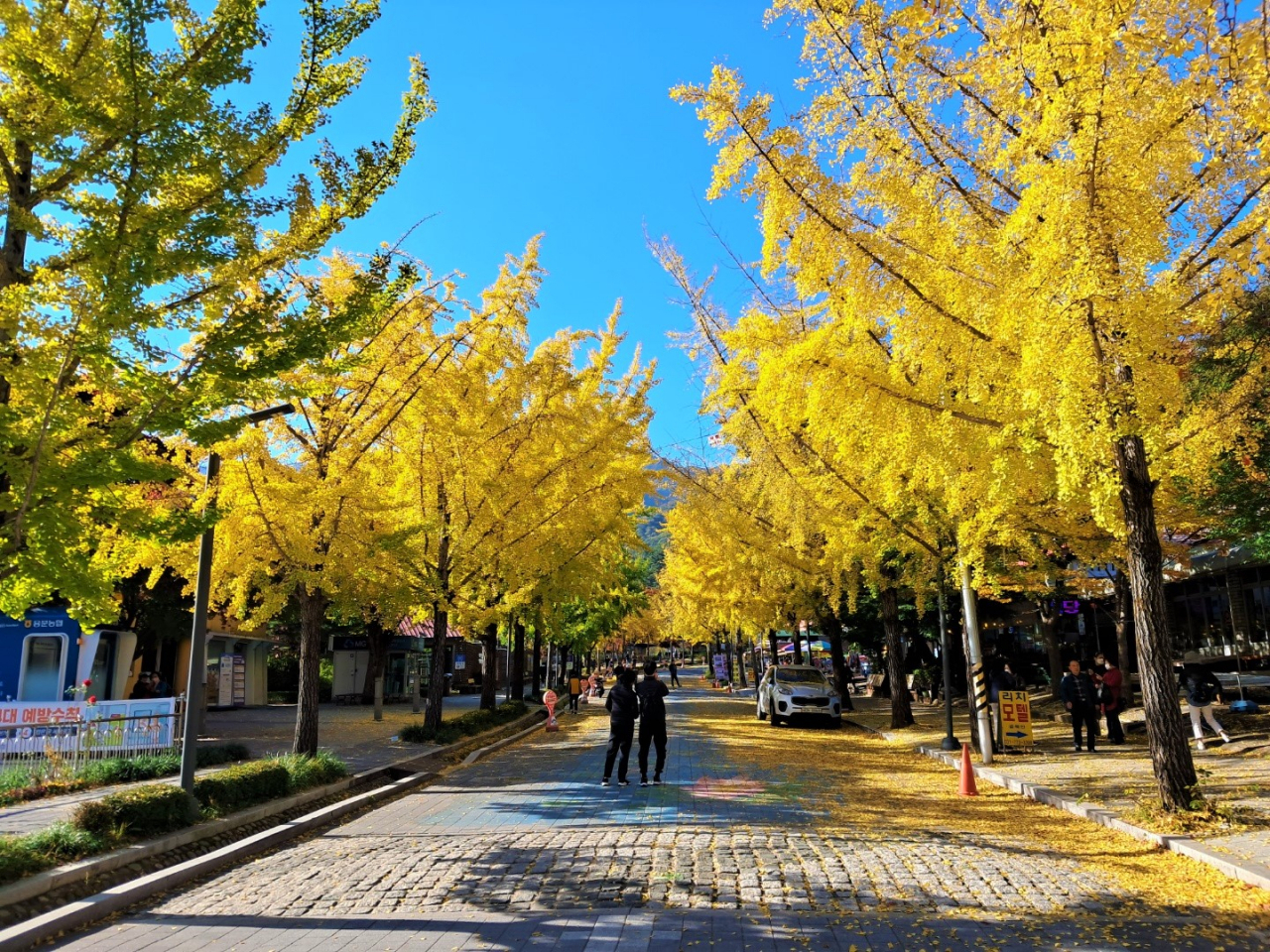
Peeping leaves of red and gold while grasping a cup of warm coffee at a nearby cafe or enjoying the scenic views of the city in orange and brown hues on a bus ride is always a great way to feel the deepening autumn atmosphere.
But, it’s a shame to just let the spectacular colors of ginkgo, maple and metasequoia and the gentle fall breeze go by, with the winter season lurking just around the corner.
Take in the flaming reds, dazzling yellows and brilliant oranges with thrilling activities before the temperature really starts to drop this year.
Fall foliage is expected to peak on Nov. 11 this year.
Paragliding in Danyang sky
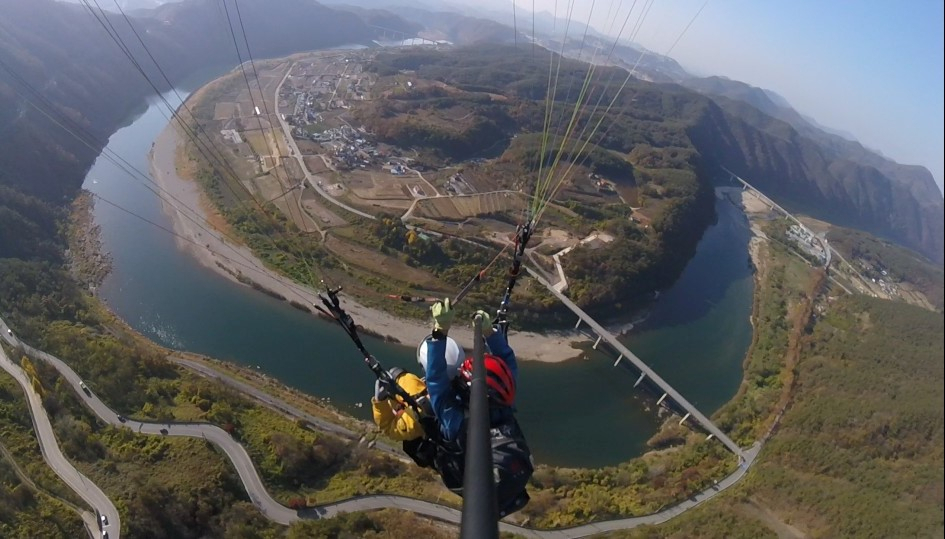
Soaring through the sky is arguably the most exhilarating way to enjoy the stunning fall foliage.
Parastory, a paragliding company located at Sobaeksan in North Chungcheong Province, offers a chance to take in an amazing bird’s-eye view of Danyang County, featuring the meandering Namhan River -- the second-longest river in South Korea -- and the province's picturesque mountains dressed in their full fall colors.
"Opinions are divided on whether autumn is a great season for paragliding in Danyang. There is a big temperature difference between day and night, creating a thick fog in the mountain area. This makes it difficult for the visitors to paraglide in the morning," a Parastory employee told The Korea Herald.
But, he added that once the sun rises, paragliders can enjoy a clear, panoramic view of Danyang from above.
After thorough safety instruction and training, extreme sports enthusiasts can change into Parastory’s iconic tiger jumpsuit and don the safety gear.
Visitors will be asked to hold an action camera to shoot video, capturing every moment of their flight in Danyang’s sky.
Parastory offers different flight courses, ranging from relaxed, calm gliding to a dynamic course with thrilling action under the guidance of professional paragliders. Fees and flight times vary by program.
Options like self-piloting and flying with a pet are available as well.
And make sure to return to the launch site after landing.
“I am also a professional photographer,” the flight supervisor jokingly told The Korea Herald, mentioning that he sometimes spends more time snapping photographs than paragliding.
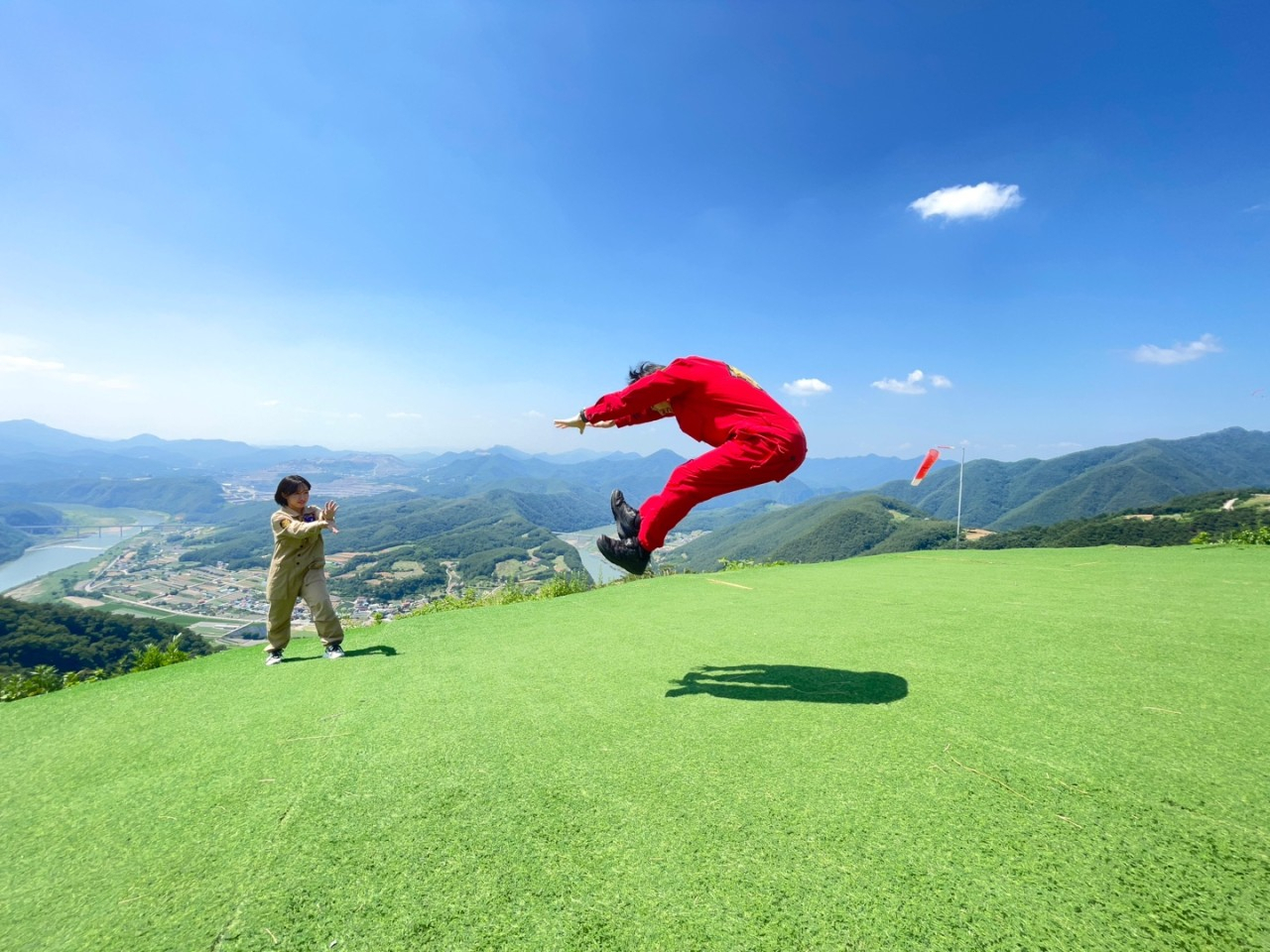
"Both local and overseas tourists visit Danyang as the county is popular for its beautiful fall foliage. But, I personally find February and March to be ideal months to paraglide as well. Sufficient wind blows in from the north and paragliders need simply stand still to make a take-off," said Kim Peng-cheol, a veteran paraglider.
"The wind is calm and makes it easier for the paragliders to offer more tranquil flight," Kim told The Korea Herald.
Reservations must be placed via Naver Booking. An additional call to confirm the exact time and date of the visit is also required.
Biking on the rails
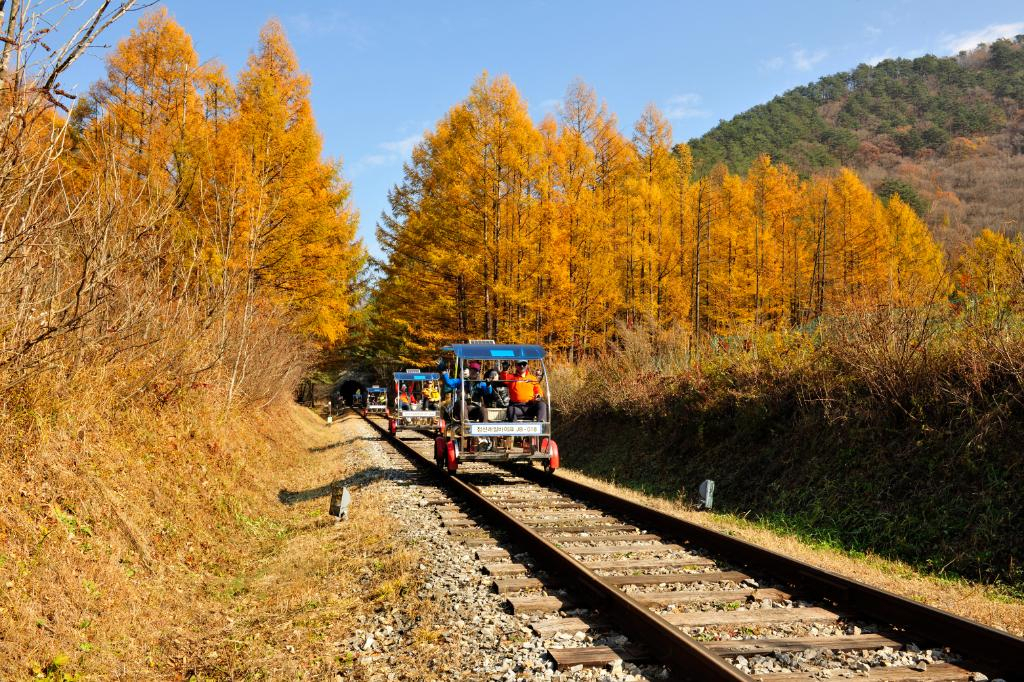
If paragliding is a little too thrill-seeking, hop on a rail bike to immerse yourself in Gangwon Province’s natural beauty and fall foliage.
Some 200 kilometers east of Seoul, the highland county of Jeongseon welcomes visitors with a splendid mountain range that can easily be spotted from practically anywhere in the area.
According to Jeongseon Railbike, the 7.2-kilometer round-trip section between Gujeol Station and Auraji Station operates the bikes three times every day: 10:30 a.m., 1 p.m. and 2:50 p.m.
All that pedaling might tire out your legs, but the cool autumn breeze and scenic mountain views will more than make up for any aches you might feel.
The rail bikes can be taken in groups of two or four, with rental priced at 30,000 won and 40,000 won, respectively. The round-trip course is nearly 90 minutes.
Hike mountain trail to Yongmunsa
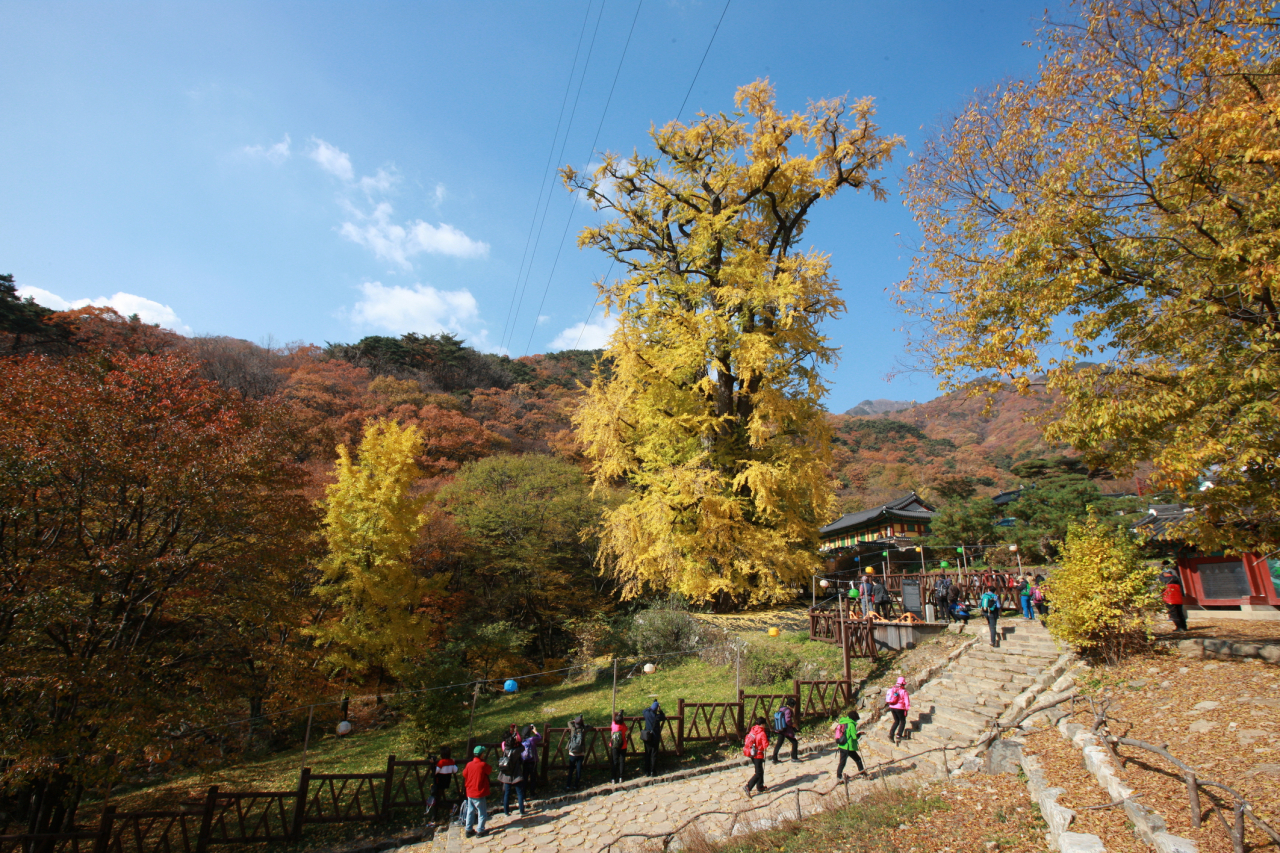
Take a light stroll to the historic temple Yongmunsa and take in the magnificent fall foliage featuring the temple's prominent ginkgo trees.
Yongmunsa, just east of Seoul in Yangpyeong, Gyeonggi Province, beckons with two lines of ginkgo trees stretching from the Yongmunsa Tourist Information Center, which is the starting point of the 1-kilometer trail to the temple.
The seemingly endless rows of trees are a beloved course among many looking to capture fall in its full glory. Sounds of traffic near the parking lot are soon replaced by chirping birds and crunching leaves.
A 20-minute walk brings you to the temple’s wooden entrance gate, Cheonwangmun, which houses the Four Heavenly Kings.
The largest ginkgo tree in Asia, which is said to be more than 1,100 years old, stands majestic in the temple’s courtyard, its bright yellow leaves glimmering in the sunlight.
Admission is 2,500 won for adults, 1,700 won for teenagers and 1,000 won for children.
Peak fall foliage at Yongmunsa is expected Tuesday.



















![[Today’s K-pop] Treasure to publish magazine for debut anniversary](http://res.heraldm.com/phpwas/restmb_idxmake.php?idx=642&simg=/content/image/2024/07/26/20240726050551_0.jpg&u=)